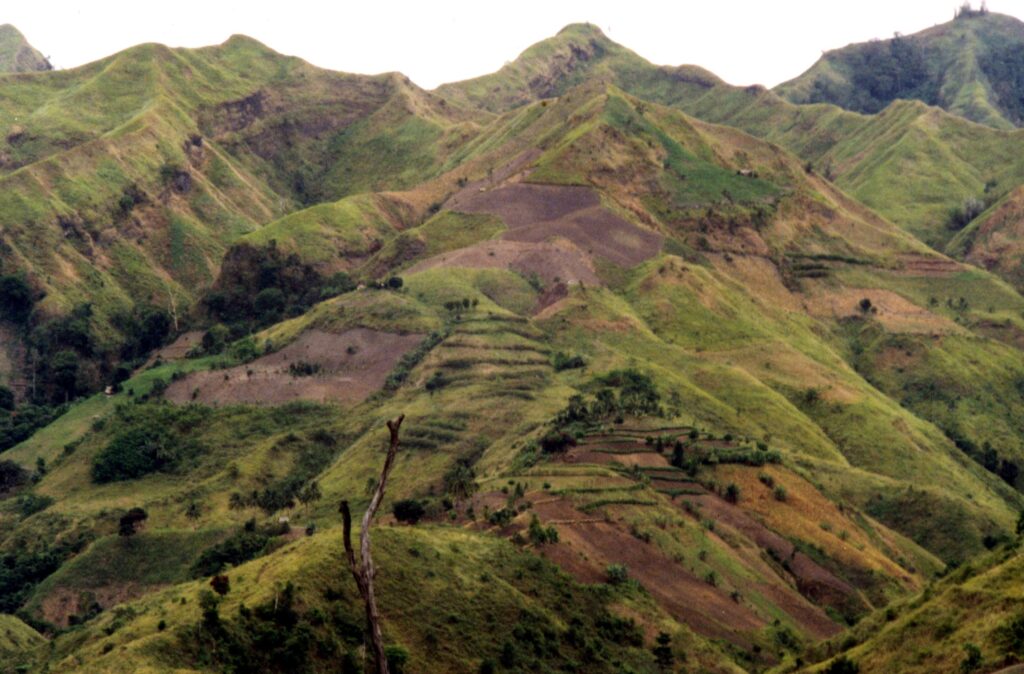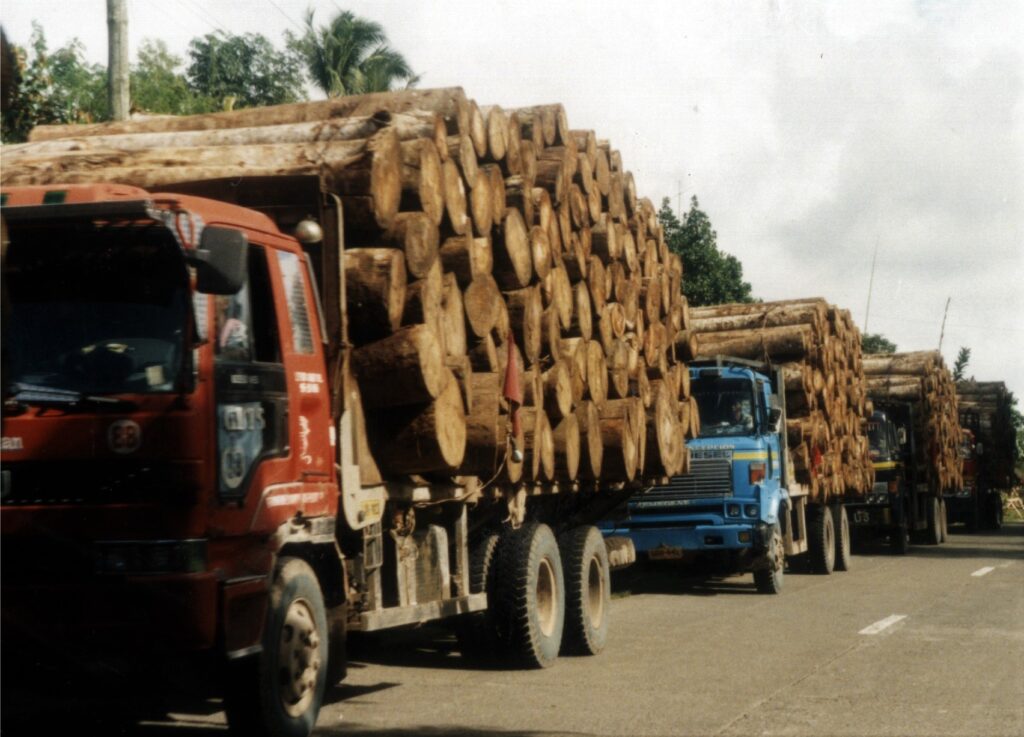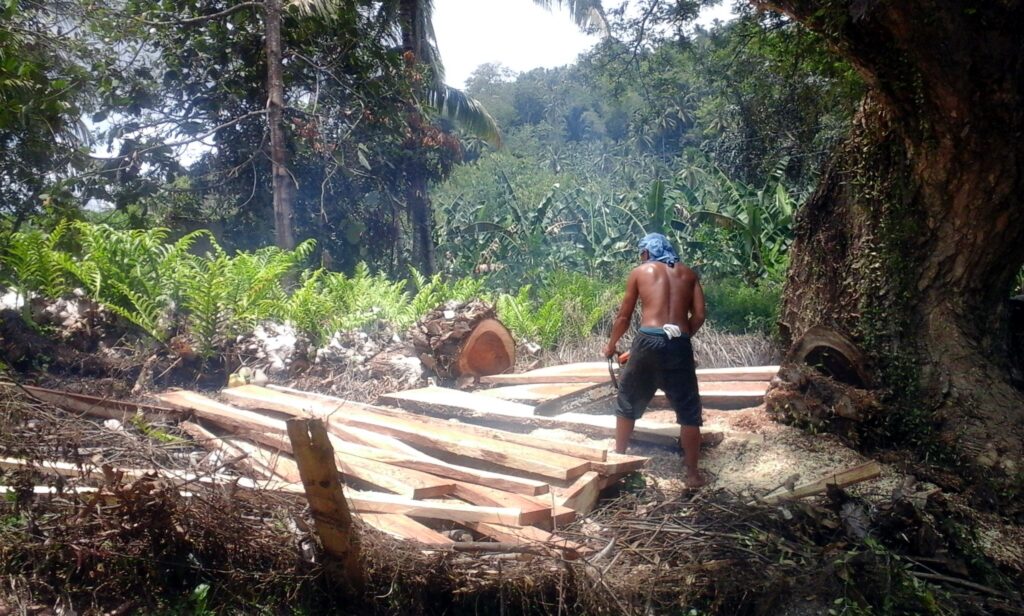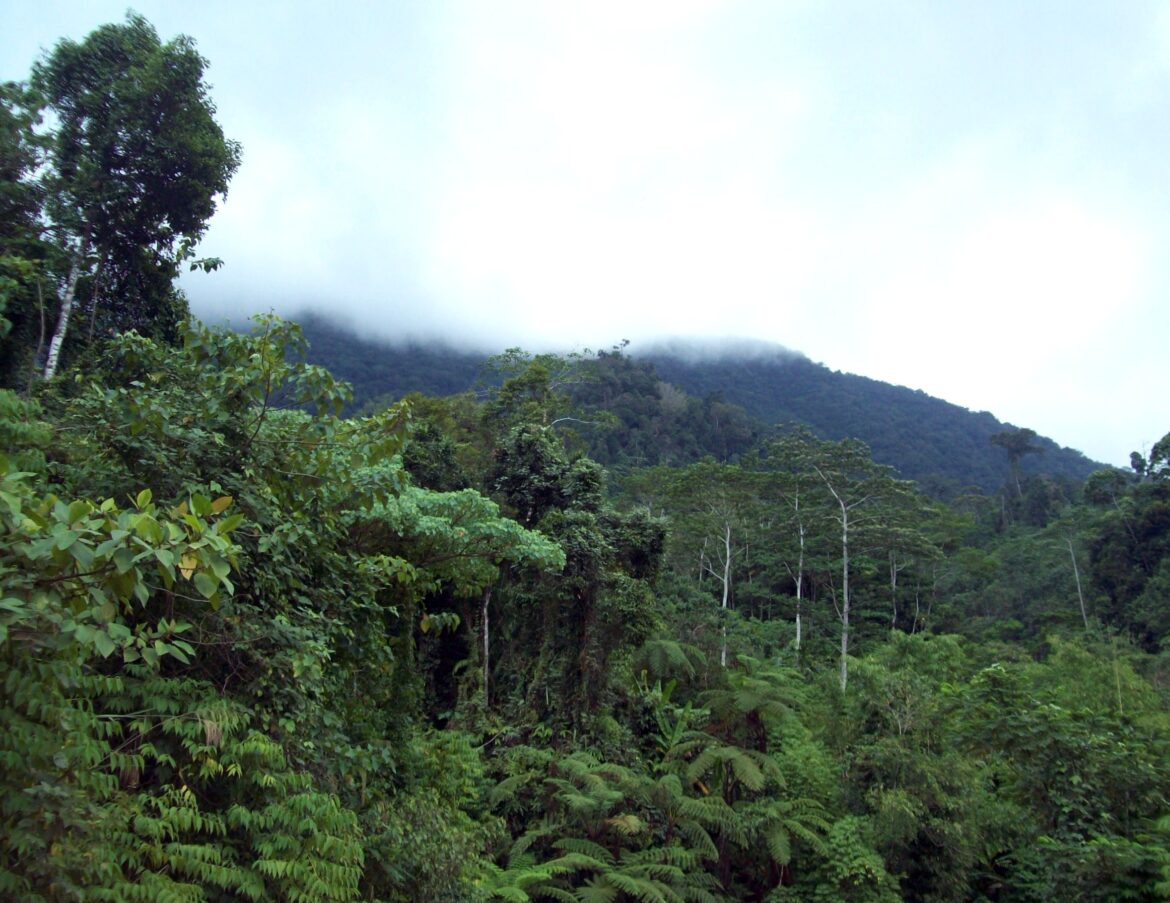Text and Photos by Henrylito D. Tacio
If it does not do something drastic now, the Philippines would be the first country in Asia to completely lose its forest cover soon. Experts say that the country has lost most of its forests in the past 50 years. The next generation will have to seek solutions to this problem.
At the recent fifth ASEAN Plus Three Junior Science Odyssey held at the University of the Philippines Los Baños in Laguna, Dr. Rodel Castro was quoted as saying: “There’s only a little time left. Your generation will inherit this problem (on climate change) and it is, indeed, your generation that will have to wrestle and seek solutions to this problem.”
“We have lost most of our forest of old over the past 50 years and, along with them, many of the ecological services they provide,” deplores Peter Walpole, executive director of the Environmental Science for Social Change (ESSC).
In 1934, forests comprised more than half (54%) of the country’s total land area of 30 million hectares. In 2010, the forest cover had gone down to 23% or about 6.8 million hectares, according to a report compiled by the Senate Economic Planning Office (SEPO).
Based on the 2010 satellite imageries released by the National Mapping and Resource Information Authority (NAMRIA), open forests accounted for 68% (4.595 million hectares) of the country’s total forest cover, 28% are closed forests while the rest are mangroves.
Most of the remaining mangroves can be found in the Autonomous Region in Muslim Mindanao.
Caraga Region has the highest total forest cover in Mindanao, with 683,112 hectares. Davao Region is closely trailed with 428,716 hectares. The rest of the regions: Northern Mindanao (377,858 hectares), ARMM (301,894 hectares), and Zamboanga Peninsula (176,918 hectares).
“Where have all our forests gone?” asked Jethro P. Adang, director of the Davao-based Mindanao Baptist Rural Life Center (MBRLC). “Why are we losing our trees at a very fast rate?”
The ever-growing population can be partly blamed. “The most likely causes were the increase in population – up from more than 500,000 in 1521 to around seven million in 1900,” the ESSC publication surmised.
Today, the Philippines is home to more than 100 million Filipinos. “This was accompanied by the spread of commercial crops (abaca, tobacco and sugarcane) and by growth of pasture lands for cattle raising as the Philippines became part of the world economy,” the publication continued.
But logging – both legal and illegal – is seen as the primary culprit. “An important source of deforestation has been the dramatic expansion of destructive logging,” wrote Robert Repetto in The Forest for the Trees? Government Policies and the Misuse of Forest Resources.

Denuded upland 
Logging 
Cutting trees for lumber
“Logging is more than an ecological problem,” the book, Saving the Earth, published by the Philippine Center for Investigative Journalism, surmised. “It is a social, political and economic dilemma as well. At the root of the malaise are stupendous profits and the ease with which they can be raked in.”
Upland migration and agricultural expansion had also contributed to the fast disappearance of the country’s forest cover. “Some 80,000 to 120,000 families cleared an estimated 2.3 million hectares of forest land,” Repetto wrote. “The spread of shifting cultivation largely reflects population growth and the economy’s failure to provide employment alternatives for the country’s rural poor.”
The ESSC believes that had all these factors been carried out in a manner that contributed to the overall development of the country, “the majority of the people could have benefited.”
However, historical land classification indicates that only very few people – less than 500 individuals or corporations – had held access rights to most of the country’s forest resources. “This figure highlights the injustice,” the ESSC publication points out.
The ESSC thinks the responsibility for the present sad state of the Philippine forests rests with past administrations. “There has been a near total failure on the part of the government to recognize the socio-cultural and ecological values of the forests,” it says, adding that they failed “to recognize any value except short-term economic gain.”
The ESSC also fears that this “short-term economic gain” thinking may also be “repeated in the drive to adopt mining as the answer to our economic development.” In the Philippines, mining operations are oftentimes located in the ancestral land, forest land, and even prime agricultural land.
But the destruction caused by deforestation is already written on the wall.
“Deforestation has left upper watersheds unprotected, destabilizing river flows, with significant effects on fish population and agriculture,” Repetto wrote. “The implications for hydroelectric projects and irrigation facilities have already become apparent in Luzon, where anticipated lifetimes of important reservoirs have been cut in half by sedimentation.”
The Philippine Eagle Foundation said that a pair of Philippine eagles needs at least 7,000 to 13,000 hectares of forest as nesting territory. “The Philippine eagle has become a critically endangered species because the loss of forest has made it lose its natural habitat,” explained Dennis Salvador, PEF’s executive director.
According to Dr. Rodel D. Lasco, a member of the United Nations Intergovernmental Panel on Climate Change (IPCC), deforestation is one of the leading causes of greenhouse gas emissions. “Ten billion to 12 billion tons of carbon dioxide are released per year due to deforestation, that is loss of forest, as well as through agriculture, such as livestock, soil and nutrient management,” he pointed out.
That’s why Filipinos are urged to plant a tree – even at the end of the world, so goes a saying. American President Theodore Roosevelt once reminded: “A person without children would face a hopeless future; a country without trees is almost as helpless.”

